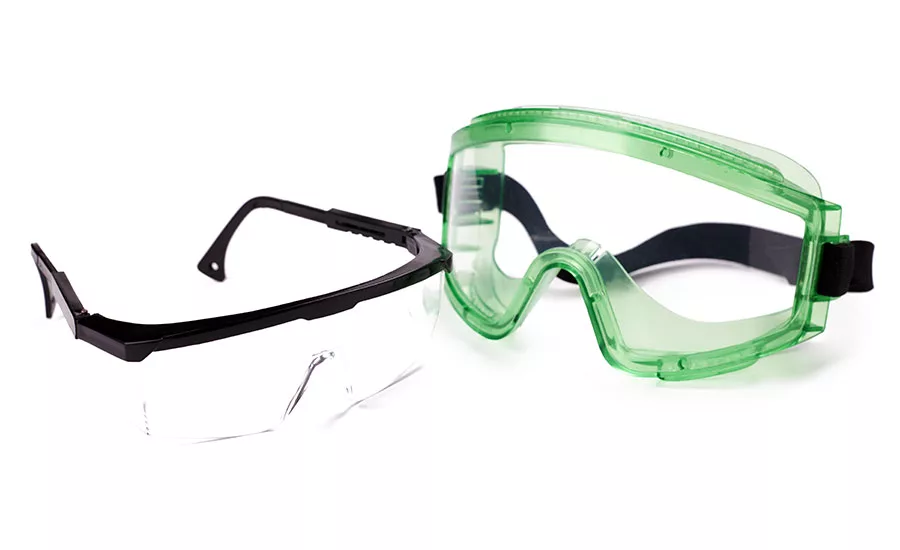Eye Safety Basics for Drillers
In Vast Majority of Injuries, Eye Protection not Worn, Worn Wrong

Columnist Dave Bowers emphasizes wearing protective eyewear where needed, but else stresses the fit and fitness for the task. Choose wisely.
Source: Getty Images
One unique thing about drillers is our ability to determine conditions at the bit without actually seeing what goes on at the bit. This skill takes a long time to develop and, combined with good decision-making, determines a driller’s success. But what if we had to make all decisions in our lives without the aid of vision?
How many times have we completed a task without eye protection that should have required eye protection? Drilling, welding, grinding, mixing chemicals, pressure washing and myriad other things require eye protection. Despite knowing this, often workers fail to wear the proper protection for the job or wear no eye protection at all.
Consider the following: Humans use sight to make about 80% of all our interpretations about the world around us. That makes the ability to “see” what happens at the bit special. Each year, an estimated 300,000 workplace eye injuries send workers to the emergency room in the U.S. In around 90% of these cases, eye protection is not worn, doesn’t fit or isn’t appropriate protection for the application. I have worked with quite a few people over the years who used sunglasses for torch cutting, or glasses not stamped as ANSI Z87.1 safety eyewear, because employer-issued safety glasses were “not cool.” The age of Covid-19 has added the complaint that, “When I wear a mask my glasses fog up.” Eye injuries account for an estimated annual $300 million in medical bills, compensation and time off each year, and men ages 25-44 comprise 80% of all workplace eye injury victims.
How do these injuries happen? The Centers for Disease Control and Prevention (CDC) groups eye injuries into three main categories.
- Striking or scraping: Think airborne dust and grit. Other examples include cement chips and metal filings. Tools often eject materials like these. Blunt-force injuries to the eye or eye socket from tools like pipe wrenches fall into this category.
- Penetration: Nails, wood or metal slivers, or any number of hazards found on an active, mud-slick construction site. An eye puncture can result in permanent vision.
- Chemical and thermal burns: Drillers can interact with a number of industrial chemicals and cleaning products, common causes of chemical burns to eyes. Welding without proper eye protection? You put yourself at risk for thermal burns, which can damage eyes and surrounding tissue.
As I often do, I speak here from experience. I once wound up in the emergency room with an eye-related injury after a hard day of drilling. I wore safety glasses every day, all day on the rig, so I would not expect to wind up with an eye injury.
I ran a geotechnical rig early in my career that had direct drive via a square steel Kelly bar. This Kelly passes through a brass bushing to protect the gears in the top-head. The driller protects this wear bushing by keeping the Kelly bar greased. Well, in my haste to make production, I failed to grease the Kelly bar. Partway through the job, I noticed flakes of brass floating in the air.
I immediately stopped drilling and greased the Kelly bar, and then finished drilling for the day. Back at the hotel, I showered and got ready to go to dinner. At dinner, my eye began to feel irritated. I did the one thing you shouldn’t do when your eye feels irritated: I rubbed it. It turns out I had a flake of brass on an eyelash and had washed it into my eye in the shower. Rubbing it dug it in. I tried to tough it out for a little while until I could not stand it, and I had to go to the ER.
The doctor examined it and decided they would have to “burr” it out. They held my eye open as the doctor used a tool that resembled an oscillation saw with a super-fine blade to remove minute layers of the cornea, until the foreign object could be removed. Thinking about that blade moving back and forth over my eye is still unsettling.
The next day my eye hurt, to say the least, but I still had a job to finish so I pushed through. This situation was completely my doing, and could have been much worse. I could have simply avoided it had I greased the Kelly first thing. Although I did have safety gear on, I made a decision to not follow protocol and wound up getting hurt.
Why do workers choose not to wear eye protection? Uncomfortable eyewear causes pressure, and pinching and slipping points, and ends up on top of workers' heads or in their pockets instead of over their eyes. Workers wearing masks, I suspect, cite fogging as a major factor for not wearing their PPE on the job. They can't see with fogged-up eyewear, so naturally, they take them off.
What can we do? Provide a few frame options for workers, so they get the right fit. Make anti-fog wipes available and encourage their use. I also find a little sports tape at the top of my N95 severely limits fogging, so do not be afraid to think outside the box. Do not forget: The safest PPE is the PPE that is worn, so it has to be comfortable.
Until next time, stay safe and keep turning to the right.Looking for a reprint of this article?
From high-res PDFs to custom plaques, order your copy today!





